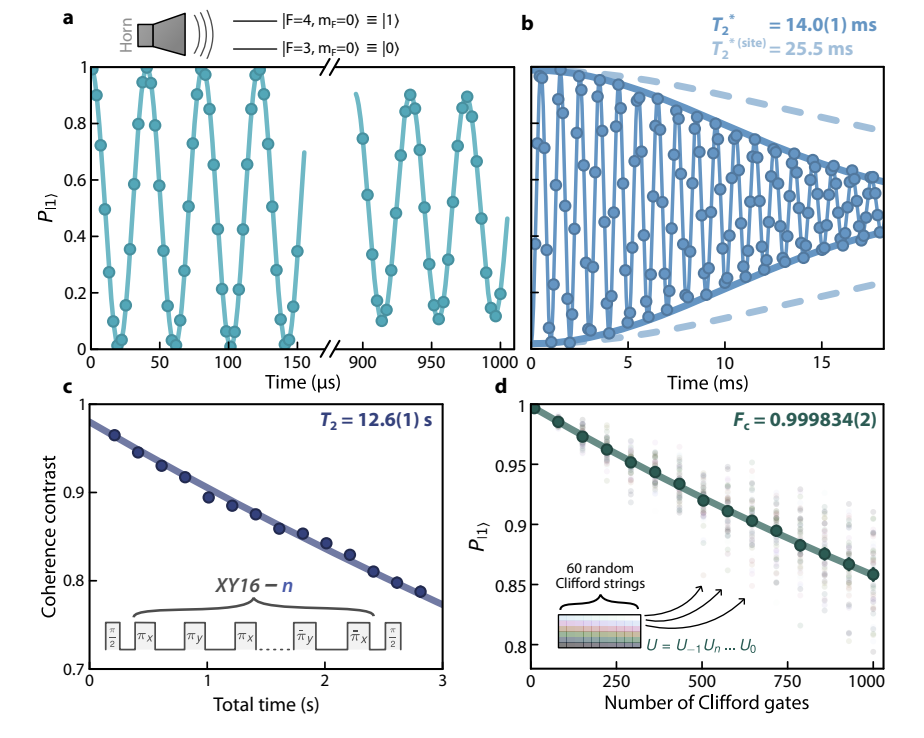Making it Look Tweezy: Caltech Researchers Use Optical Tweezer Arrays to Trap Over 6,100 Neutral Atoms

Insider Brief
- A California Institute of Technology research team reports they achieved a significant milestone using optical tweezer arrays to trap over 6,100 neutral atoms.
- The team also demonstrated a coherence time of 12.6 seconds for hyperfine qubits within an array.
- Work remains, the team says — The experiment did not cover the rearrangement of atoms or the entanglement of atomic qubits, both critical for actual computing tasks.
- The work was reported in the pre-print server ArXiv.
A team of researchers say there’s a path forward to increase the number of atoms trapped by optical tweezer arrays to tens of thousands, while still keeping very precise control over them. Although work remains, the achievement represents yet another scientific leap over hurdles that remain in the way of developing quantum computers that can be used for practical purposes.
The team, which reported their findings in a paper on the pre-print server ArXiv, said they achieved a significant milestone using optical tweezer arrays to trap over 6,100 neutral atoms. They add it’s a substantial step forward, especially considering the challenges associated with scaling up the number of atomic qubits while maintaining long coherence times and high-fidelity imaging. That’s been a huge hurdle for scientists.
Optical tweezer arrays, known for their transformative impact on atomic and molecular physics, are now at the forefront of quantum computing, simulation, and metrology experiments. They offer a unique advantage in the simplicity of controlling and detecting single particles.
Traditionally, experiments have managed to trap tens to hundreds of atomic qubits, according to the paper. Recent experiments pushed this number to around one thousand, albeit without defining qubits or achieving coherent control. The leap to arrays comprising over 6,100 atoms in about 12,000 sites may not just be a record, suggest the researchers, but also may set new standards in performance metrics crucial for quantum computing advancements.
The researchers report a coherence time of 12.6 seconds for hyperfine qubits within these arrays—a record for such a setup. Additionally, they achieved trapping lifetimes close to 23 minutes at room temperature, coupled with an imaging survival rate of 99.98952% and imaging fidelity exceeding 99.99%.
These figures are particularly interesting because they point to overcoming one of the fundamental limitations that have historically hindered the scalability of quantum computing platforms. This advance at least hints at the feasibility of universal quantum computing with tens of thousands of atomic qubits in the near future, according to the team.
The researchers write: “Finally, our work indicates that further scaling of the optical tweezer array platform to tens of thousands of trapped atoms should be achievable with current technology, while essentially preserving high-fidelity control.”
The success of this experiment could also one day impact quantum simulation and metrology by leveraging the single-particle readout and positioning capabilities inherent to optical tweezer arrays.
However, the researchers also acknowledge that more work remains and there are areas requiring further exploration and development. For instance, while the experiment demonstrated exceptional scaling and performance metrics, it did not cover the rearrangement of atoms or the entanglement of atomic qubits—both critical for actual computing tasks. The ability to dynamically rearrange atoms within the optical tweezer array is crucial for practical quantum computation, as it allows for the execution of complex algorithms and error correction.
The researchers pointed out that the current apparatus faces limitations in the number of trapping sites due to the finite number of pixels on spatial light modulators (SLMs) and reduced diffraction efficiency at higher incident laser powers. Future improvements might include using higher-resolution SLMs and techniques for more efficient power and field of view utilization. Additionally, because the thermal heating of the objective lens causes optical aberrations, mitigation techniques will be essential for further scaling.
Despite these challenges, the research team is optimistic about overcoming these hurdles with current and upcoming technological advancements. They anticipate that further scaling to tens of thousands of trapped atoms with high-fidelity control is within reach.
This study represents a critical milestone in the field of quantum computing, showcasing the potential of optical tweezer arrays to significantly scale the number of qubits while maintaining or enhancing performance metrics. As researchers address the outlined limitations, the path towards practical and universal quantum computing with atomic qubits appears increasingly viable, promising a new era of computing capabilities.
The team included Hannah J. Manetsch, Gyohei Nomura, Elie Bataille, Kon H. Leung, Xudong Lv and Manuel Endres, all of the California Institute of Technology.
For a deeper look, please review the paper A Tweezer Array With 6100 Highly Coherent Atomic Qubits on ArXiv. Pre-print servers are not officially peer-reviewed papers.
